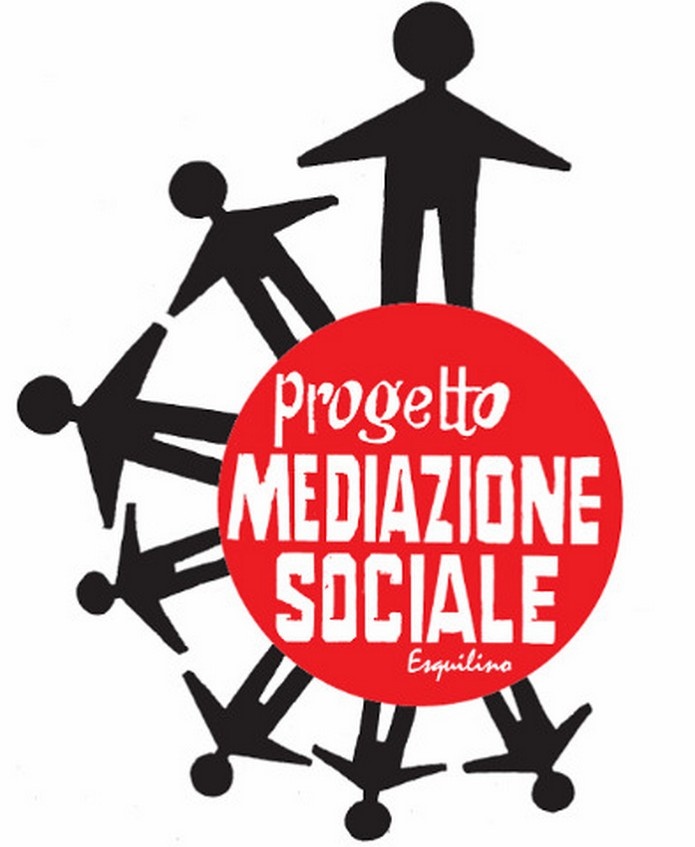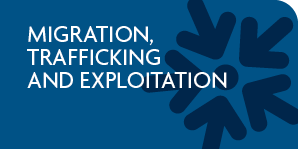
Projects
PROJECTS
AREA OF
Social mediation and Urban safety
|
Social Mediation - Esquilino  SUMMARY The project of 'Social Mediation - Esquilino' has operated within the Esquilino District since 2005 and is addressed to local communities by stimulating their participation as responsible citizens. The interventions of mediation initiated in the project framework intend to promote a culture of encounter, sociality and legality among citizens, encouraging a new communication process among institutions, schools, citizens of different cultures, merchants and associations around the District. It also provides support for care and rehabilitation of public spaces to make the city cleaner, more attractive, cozy and safe, as well as to increase the perception of wellbeing and urban safety. It is thus possible to regenerate social ties, enhancing places and relationships and consolidating the sense of belonging to the territory thanks to the transformation of conflicts into useful opportunities to strengthen the resources of each territory.
NAME OF THE PROJECT "Social Mediation Esquilino" Currently under the name "Esquilino Si/Cura"
RECIPIENTS Citizens of the Esquilino District.
METHOD OF FINANCING Since its inception in 2005, the project has had several sources of funding: Funding body: Safety Department, Municipality of Rome. Promoting body: Safety Department, Municipality of Rome. Funding body: Lazio region. Promoting body: Municipality of Rome, Historical Centre Legal reference: Regional Law n. 15, 5 July 2001."Promotion of measures to promote an integrated system of security within the region". Funding body: Lazio region, Public Notice "Fraternità". Promoting body: Municipality of Rome, Historical Centre.
AREA OF INTERVENTION Municipality of Rome, Historical Centre - Esquilino District.
BRIEF HISTORY The experience of social mediation in Rome was created in July 1999, sponsored by the City of Rome, Department Roma Sicura. The implementation of the project was entrusted to a temporary association of companies comprised of three social cooperatives (Parsec, Magliana 80, Eureka 1). The project was initially funded by the Social Policy, and the territories in which it was first implemented were Largo Sperlonga (XX City Hall), Ponte di Nona (VIII), Quartaccio (XIX). About one year later, in March 2001, a second project of social mediation was put in place, in the territories of Pietralata (V), Bastogi (XVIII) and Tor Fiscale (IX). In May 2001, the project came under the new Department of Security, under the direction of the Department XVIII - Security, and had as a partner the then rising Council Committee on Security. The supervision and training of the project team has seen the significant involvement of figures in the professional, academic, national and international field. The project development in individual districts was coordinated by a multi-professional team, consisting of psychologists, sociologists, anthropologists, educators and community experts in the form of social, cultural, family and school mediation. While respecting the individual history of each district, the mediators have found some common elements in them, including the presence of conflicts related to the allocation of housing or employment, the difficult relationship between citizens belonging to different cultures, to the degradation of common areas such as public squares and gardens, to incidents of abuse and bullying in schools and other educational institutions, to trafficking and consumption of drugs and a widespread forms of lawlessness. In these neighbourhoods it has been generally observed there is a poor social cohesion, and communication is often absent among social and institutional actors in the area. The inhabitants mostly belong to lower middle classes, often disadvantaged, whose situation is often compounded by the problem of unemployment. These are regions that, alongside the unresolved problems, have unexpected resources in terms of potential activation of subjects and existing skills, often not valued. In such contexts, we try to get to know the community beyond the stereotypes of social unrest which connoted them, in order to explore instead latent potential, the ability to find solutions and their own resources. In recent years (since 2008) the scope of the projects of social mediation of Rome has been greatly reduced, with a gradual economic disinvestment that literally erased the interventions in historical territories. The Social Mediation Esquilino (Historical Centre of the Municipality of Rome), together with the Piazzando project (V district) are the only remaining projects to witness this project for more than a decade.
OBJECTIVES The project Social Mediation Esquilino after mapping and analysis of the conflict present in the territories, is directed towards the empowerment of communities by promoting the progressive empowerment of local communities in the management of shared issues related to daily life, treating, with the citizens the promotion of a culture of social dialogue through the construction of pathways in which they participate in the process of conflict mediation. The project in its various actions intends to meet common needs through practice, oriented mainly to highlight the potential of dialogue, mutual respect, in the remittance in the communication between citizens and between them and the institutions, summarized in the active participation in the search for shared solutions and compared to the critical issues identified by the citizens themselves. In this way the basic conditions that allow one to work on the sense of insecurity (real and perceived) - increasingly present among citizens- are put in place. Endeavouring to start with the public processes that foster a culture meditative for "a city (that) we-care", the orientation that underlies this proposal, is to ask the centre not so much about the "security problem", but rather about "urban security as a resource to be built together."
METHODOLOGY OF INTERVENTION The methodology adopted is based on a conception of the conflict interpreted as the opportunity for change and growth for the entire local community, a potentially virtuous dynamic, rather than a social pathology to cure. The local community is broken down as a field (sometimes permeated by conflict sometimes by the dialogue), in which one must never ignore the differences and processes of concealment. The sense of this action remains within the community and feeds dynamic participation. In this interactive process, the mediator infects the community about the possibility of always finding the best solutions to the functional management of the conflict, he/she stimulates the necessary mediations and follows the solution process and its effects in the social body, interacting with individuals in designing actions and practice solutions. In each territory the approach to conflict management has so stimulated the creation of stable and informal moments of debate and discussion on the issues highlighted by the citizens themselves and they have become protagonists of experiences of participatory planning and integrated their own territory. Mediators work with the functions of facilitators of communication and stimulus to the realization of the shared pathways; their position is either internal/external to compared to the same local community, allowing them to share their perspectives, languages and trust, but also to remains, in cases of conflict, "above the parties", and to identify resources and solutions not previously considered. Rather than transmitting the theoretical necessity of a non-violent culture in conflict management, it has worked in favour of concrete experiences of management and the transformation of critical issues through participating in restarting communication. Social mediation is configured in a set of actions that have contributed to the construction (or reconstruction) of communication exchanges, aimed also at understanding and managing the reasons and conditions of the relational compatibility. It has represented more than just the application of a technique for dealing with conflicts, taking shape as a process of production of sociability that can regenerate bonds between people and provide more opportunities to share and address the problems, thus regenerating the connective tissue that binds the citizen to the territory and his/her living environment.
TOOLS AND ACTIVITIES The Project Social Mediation Esquilino sine the outset worked in a context to the specific characteristics and the different issues and problems in the various territories. However, we can draw the general lines that characterize the whole actions of the project:
NETWORK AND TERRITORY Over the years, the project Social Mediation Esquilino has stimulated, supported and built a network of local associations, schools, services, trade and tourism operators and ordinary citizens in different ways and at different times they join and participate in various project actions that are always shared with the rich associative realty that makes up the District. The Bengali, Filipino, Chinese, Indian, African, etc. associations adhere to the network.
CONTACT AND ACCESS PROCEDURES Headquarters:: "Banco della Mediazione", Nuovo Mercato Esquilino, 184, Principe Amedeo St., c/o box Direzionale Co.Ri.Me., entrance 10 - opposite box 61 and 31. Open to the public on Tuesdays and Fridays from 10:00 to 13:00 hours. Tel/Fax: (0039) 06 89689965/6; Mobile: (00 39) 389/1116214 E-mail: info@mediazionesociale.org Website: http://progettomediazionesociale.blogspot.it/ Facebook: "Progetto Mediazione Sociale"
ORGANIZATIONAL STRUCTURE The project team intervenes according to a shared and integrated approach and it avails of the professional skills of sociologists, psychologists, professional educators and cultural mediators. The team is composed of one manager and seven mediators.
EVALUATION The assessment is made by the representative of the Historical Centre of the Municipality of Rome through a system of quantitative and qualitative monitoring (quarterly report, meetings). Internal periodical checks are also carried out by the monitoring of the expected objectives - in team meetings.
|






